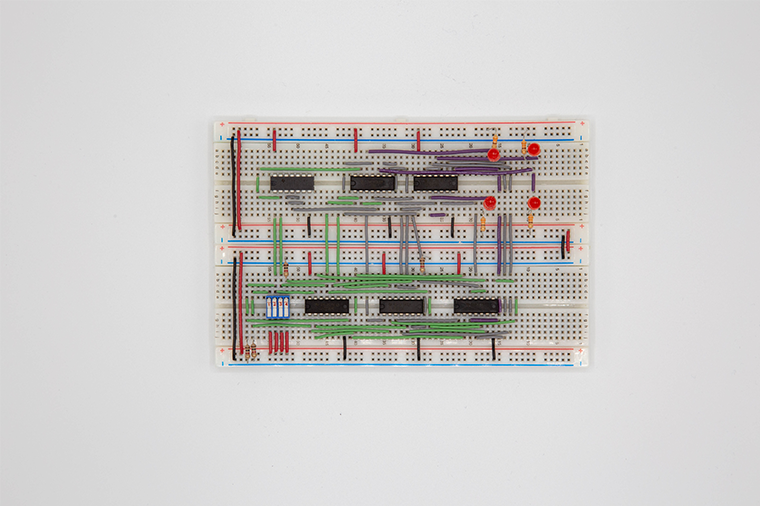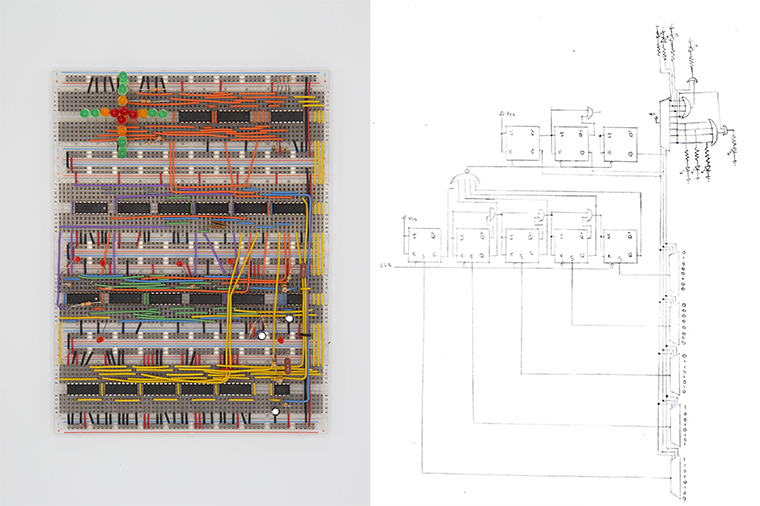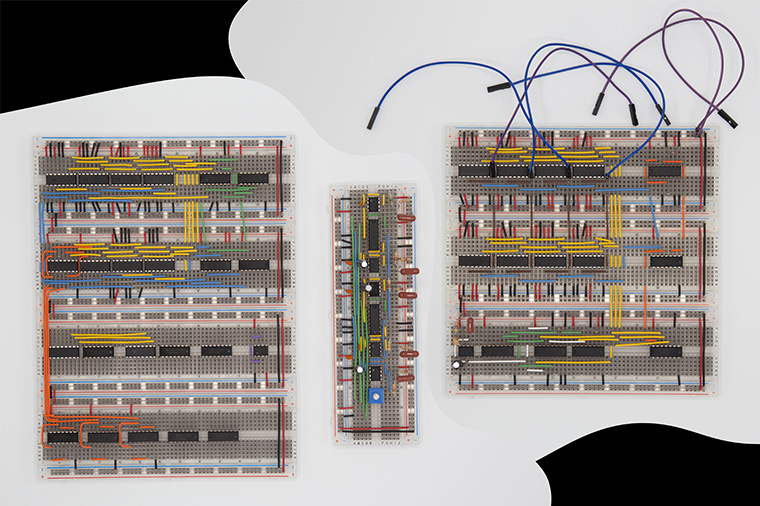digital logic design
12.2019
The first project was a four input, four output example of combinatorial logic. It was an introduction to boolean algebra, and practical problem solving with digital logic ICs.
The second project simulated a traffic signal for a four-way intersection. This was an introduction to sequential logic, timers and clocks, counters, flip-flops, multiplexers, etc. My solution to the proposed problem involved a 3 bit counter, 5 bit counter, 2 clock signals, a memory bank created with multiplexers, and significant combinatorial logic to control the LED output. Fig. 2 (right) is an early sketch of a logic diagram.
The final project was a simulation of the video game Guitar Hero. This was a collaboration with another student, and only the part of the project which I created is pictured, which does not include the LED matrix display of the game or the combinatorial display logic. Fig. 3 (right) is one “song” or 4 bit time-based pattern which could be performed. Fig. 3 (left) is an unfinished “song”. Fig. 3 (center) is a 4 bit random number generator, which created a different “song” each time it was used.
The final project was completed in collaboration with fellow student David Yang.
digital logic design
ECE 150
Theoretical and practical issues concerning design with combinational and sequential logic circuits, and programmable logic devices. Number systems, Boolean algebra, representation and simplification of Boolean functions, universal logic families. Finite-state machines, state tables and state diagrams, flip-flops, counters, registers. Adders, decoders, comparators, multiplexers, memories and applications. Programmable devices: PLA, PLD, etc. Principles of analog circuits are presented in the context of real world problems, such as 'glitches,' power and ground bounce, contact bounce, tri-state logic and bus interfacing, timing circuits, asynchronous versus synchronous circuit components. Characterization of electronic and logical properties of digital circuits. Course work involves individual and team projects in which: digital circuits are designed and prototypes are constructed and tested on breadboards; designs involving programmable logic devices are developed using CAD tools. The projects, approximately 50 percent of the course grade, are used to assess technical writing, oral presentation, teamwork and project management skills.


